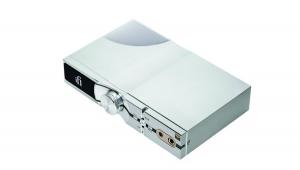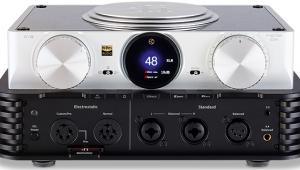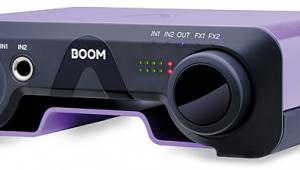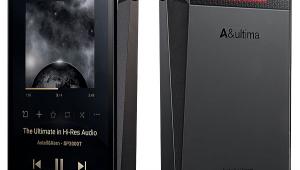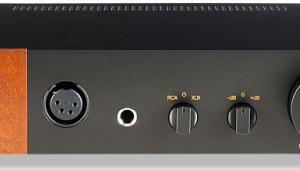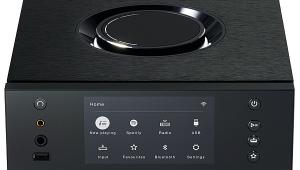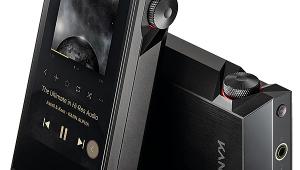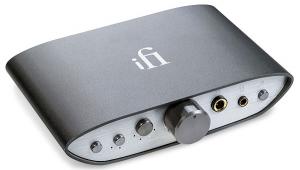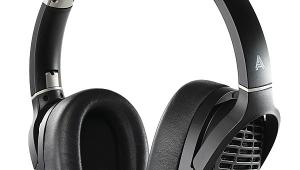Focal Stellia Headphones Page 2
![]() Pace Aplenty
Pace Aplenty
For the listening (writes CB), analogue and digital sources were played via a DNM Series Six preamplifier, Beyerdynamic A2 headphone amp [HFN Sep '17] and
a Mytek Brooklyn DAC/amp [HFN Aug '17]. The Stellias are a considerable step up, both outwardly and in terms of tech, from the Elegias, and while it seemed appropriate to listen to some of the same test tracks, I couldn't resist mixing up my repertoire with the jolly (and jolly rowdy) Shostakovich Festival Overture in Andris Nelsons' new Boston Symphony Orchestra live recording [DG 483 6728; 96kHz/24-bit] – part of his Under Stalin's Shadow series.

Even connected to an iMac running Audirvana Plus music player software and the volume setting at 10 o'clock, the pacey sound suggested that even medium-powered amps should still deliver plenty of oomph. Of course, the sound quality was considerably improved with the Mytek Brooklyn pressed into service.
Turning to LP, Mia Farrow's expressive narration for Prokofiev's Peter And The Wolf, with the LSO under (the now late) André Previn [EMI ASD 2935] took on a new lease of life. The 'cuppiness' observed with the Elegias, and sense of boosted reverb around the voice, had vanished. Indeed, I thought this was one the most natural speech sounds I had heard.
Mind you, in orchestral terms, the 1959 Decca Kingsway Hall version with Sargent conducting the LSO (an old favourite with KH for headphone reviews) is not far behind. With the Stellias you could hear the tympanist's stick heads going up and down on the skins while flute and bassoon were richly reproduced. There's some voice print-through on the tapes, but the musical characterisation is stronger under Sir Malcolm [Decca 433 6122; CD].
Dry And Mighty
Returning to Clannad's 'Newgrange' from Magical Ring [RCA PL70003] the deep bass was really impressive, while my former complaints about vocal sibilants with the Elegias were banished by the Stellia's beryllium drivers. I also heard a lot of fine detail – set-back castanet sounds, for example – which was previously obscured.
Listening to some double-bass, which came courtesy of Universal's 44.1kHz/16-bit download of Seiji Ozawa's Beethoven Symphony No 9, live with the Mito Chamber Orchestra comprising mostly leading Japanese players [Decca 483 4431], the lower-strings recitatives at the start of the choral finale were cleanly focused. What's more, they were properly dry in tone while the general sound over the Stellias encouraged extended listening. Incidentally, and notwithstanding KH's reservations about comfort, the longer I wore these headphones the more comfortable they seemed.
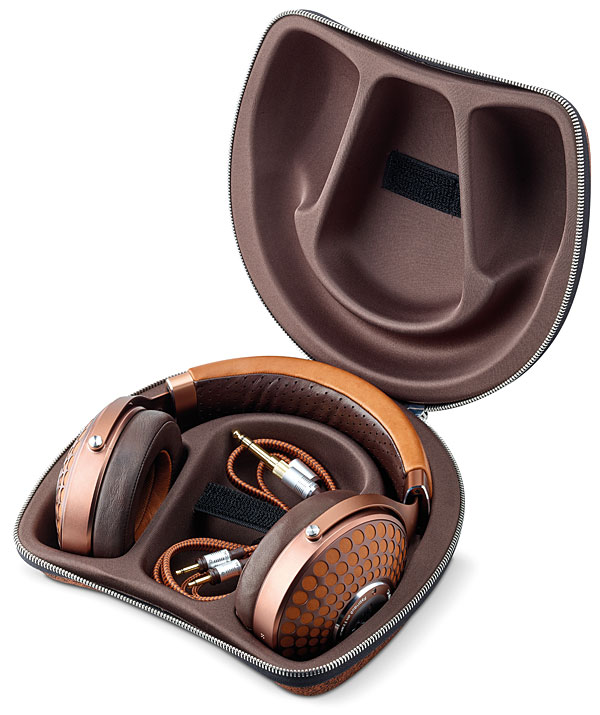
The Beethoven is to my ears an affectionately detailed performance (Gramophone magazine thought otherwise), although Bartók's music is perhaps more Ozawa's field – his Decca 2004 live recording of Music for Strings, Percussion and Celesta with the Saito Kinen Orchestra [478 2358] making a better test piece.
Here the Stellias captured the cascades of celesta in the third movement well (Bartók's rather nightmarish Adagio) along with the antiphonal effects specified in the score. Yet there was the slightest thickening, the xylophone playing lacking the proper metallic timbre, and while this probably reflected the anomalies noted in KH's Lab Report, it didn't stop me from listening on through to the Concerto for Orchestra on the same CD.
High On Hendrix
The pungent start of En Saga, from a new Sibelius orchestral music cycle, with the Gothenburg Orchestra under the youthful Santtu-Matias Rouvali [44.1kHz/16-bit] gives way to soft upper string figures below the treading opening theme, and proved compellingly alive with the Stellias. This is a recording with wide dynamic range, but the outbursts of brass were accommodated without stress and soon I was swept completely into the drama of Rouvali's reading, urged to raise the levels, which is always a positive sign with new equipment.
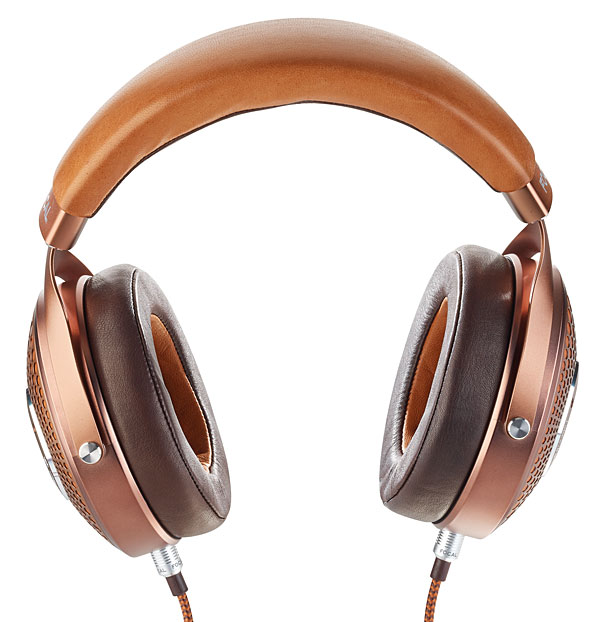
Taking a leaf from KK's book I also listened to some historic mono – but not for the 'lack of any concerns about spatiality'. On the contrary: played over my Quad ESL57s the wonderful Ivie Anderson's 'I Got It Bad…' from 1941, on the Duke Ellington album In A Mellotone [RCA LSA 3069], I was able to visualise where everyone was sitting. Did the Stellias replicate this? Pretty well I'd say. And what a seductive track this is! Every tiny vocal inflection in the singing registered beautifully.
I didn't think I had any Jimi Hendrix in my record collection, yet in a way I had. The Kronos Quartet recorded an arrangement of 'Purple Haze', Hendrix's 1967 hit, in a 1985 Nonesuch New York production [979 111-1]. It's delivered with affection and aplomb and the Stellias had me standing up and 'conducting' those slides and the steady rock beat. Hard to keep still really…
Hi-Fi News Verdict
For the man about town, with his handmade tan boots and a deep trouser pocket, the matching Focal Stellias might be just the ticket. Everything the Elegias can do, the Stellias will do better – at a price. The sound balance is full and forward and swathes of detail can be heard that you may not have noticed before in your collection. If you prefer closed-back personal listening, these headphones set the benchmark.
